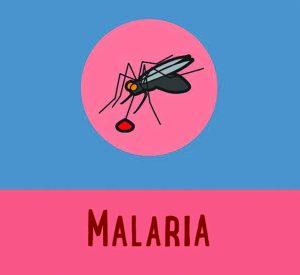Home News Surveillance project to lift Guyana’s malaria-monitoring capacity
Molecular surveillance of malaria in Guyana has commenced, using innovative technologies to understand the malaria parasite and the malaria vector responsible for the transmission of the disease.
The research project, launched on Monday, is supported by the Bill and Melinda Gates Foundation with technical leadership from the TH Chan School of Public Health and Harvard.
Speaking at the launching, Health Minister, Dr Frank Anthony shared that omics technologies have been applied to malaria parasites in recent years to get a more in-depth understanding of their structure and how it works.
With transcriptomics, proteomics and metabolomics, the data from these studies have made it possible to probe the function of individual genes to understand the biology of this parasite. In Guyana, capacity will develop further if authorities better understand the parasite.
“The ongoing translational research creates a better understanding of this parasite and holds the promise of developing new drugs and vaccines for malaria. This research project will allow Guyana to develop three new capacities: a, parasite and mosquito molecular surveillance; secondly, the monitoring spatial-temporal distribution of malaria; and third, to monitor for artemisinin resistance,” said Dr Anthony.
He pointed out that drug resistance is a complex and challenging public health problem. All known drugs, including artemisinin derivatives, have established clinical resistance.
“The decreasing efficacies of antimalarial medications have compromised the global malaria control strategy. Much more worrying is that the parasite develops resistance to antimalarial medicines faster than new compounds can be produced…Drug resistance monitoring is challenging for most malaria programmes because of financial and technical resources. This has hindered our understanding of artemisinin drug resistance, whether it is absent, now emerging or pervasive in Guyana. This research project will help to answer these questions.”
Most experts believe that the emergence and spread of artemisinin?resistant falciparum malaria would be a public health disaster. The public health costs of drug resistance are enormous. Drug resistance increases morbidity, mortality, parasite transmission, and the cost of malaria control.
The Minister further highlighted, “Increased drug resistance has been associated with increases in hospital admissions, anaemia, low birth weight, and mortality. For these reasons, we must develop the capacity to do drug resistance monitoring. Through this research project, the National Public Health Reference Laboratory now has the equipment, and its personnel was trained to do genetic sequencing. The techniques used in sequencing the malaria parasite and mosquito can be used for other pathogens and vectors. This means that in the future, we will be able to sequence viruses such as SARS COV 2.”
Strengthening national capacity to do molecular surveillance will allow Guyana to participate meaningfully in the Amazon Network for the Surveillance of Antimalarial Drug Resistance (RAVREDA) and contribute to World Wide Antimalarial Resistance Network (WWARN).
“I envisage that this research will make concrete recommendations on the management of drug resistance, such as reducing drug pressure to prevent the emergence of drug resistance, monitoring the spread of drug resistance to inform treatment policy, and finally working with pharmaceutical companies to create a pipeline of new antimalarial drugs. The research findings would help us respond more appropriately to managing malaria in Guyana.” (G12)
